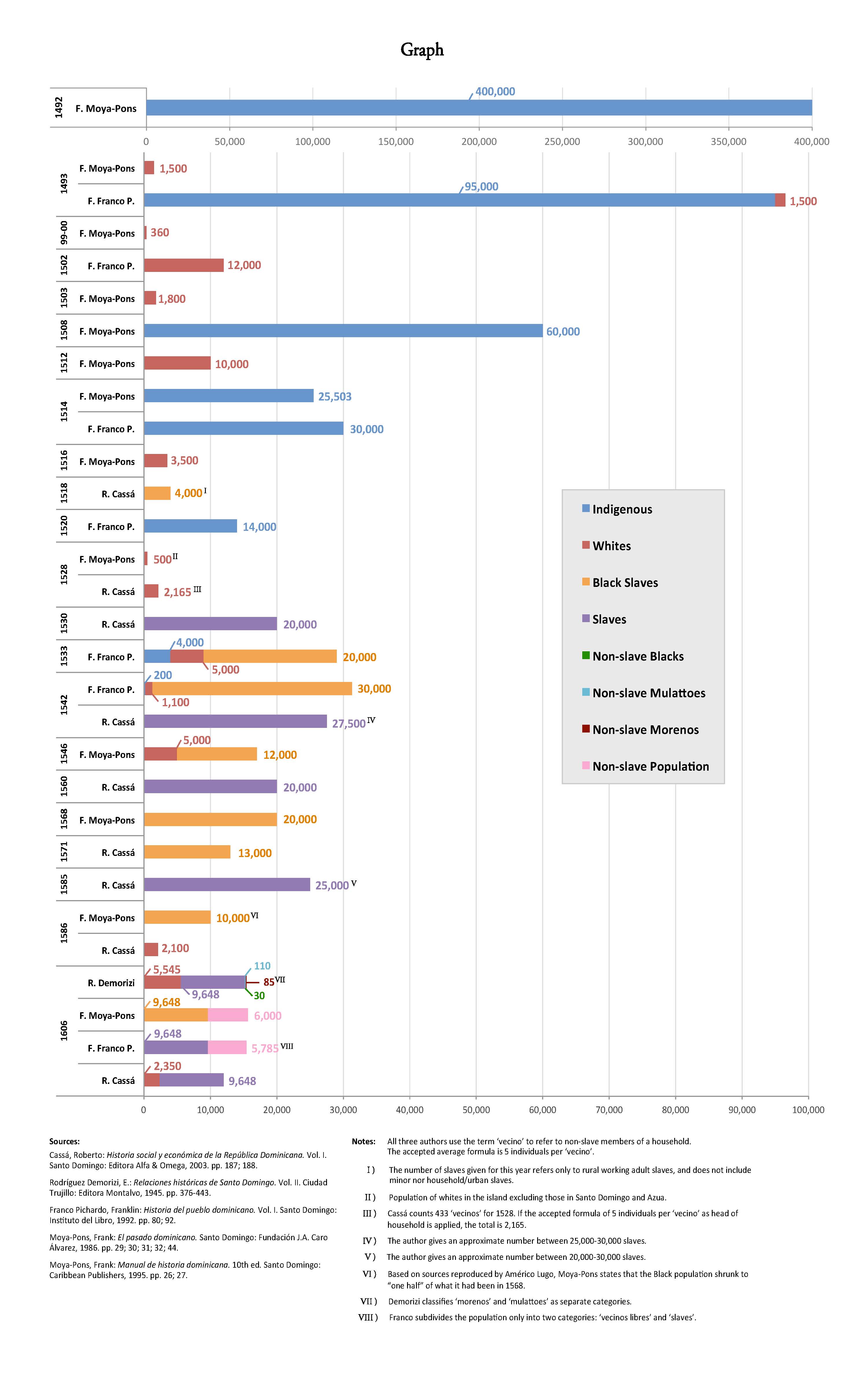Related Resources
The growth of the black population in La Española in the 1500s
Since the arrival of the first known Blacks on the island of La Española during the two decades following Columbus' 1492 expedition, the long term trend in population of Black African ancestry in the island-colony was predominantly one of growth throughout the century. This growth accelerated until the early 1540s, when the population apparently exceeded 40,000 individuals. This was followed by a relative diminution in the second half of the century when the number of Blacks generally fell below those of the first half, beginning with a sharp fall of about 50% to about 12,000 in the late 1540s. An alternation ensued between phases of ups (most notably in the 1580s) and downs during the subsequent five decades, resulting a relative stabilization at between 13,000 and 10,000 people. The graph in this page, constructed by the CUNY Dominican Studies Institute with data from the existing scholarship, clearly shows these trends.
After the 1510s the population of Black African ancestry in La Española was never smaller than, roughly, 10,000 individuals. After that, Afro-descendants became a permanent demographic majority that at times may have been relatively less numerous but always outnumbered the white population. This initiated a trend in racial demographics of predominance of population of Black African ancestry --with a variety of skin shades generated by increased mixing of natives, Blacks and whites that has persisted into the twenty-first century.
These general figures so far available about the Black population of La Española during its first century as a colonial society were mainly collected by Dominican scholars using for the most part estimates contained in secondary sources such as reports and letters by individual colonial officials and private residents. A lot of additional archival research remains to be done to assess these estimates with more quantitative accuracy against other kinds of data contained in primary sources, and more importantly, to determine the reasons for the sequence of relative contraction and expansion cycles of the Black-mulatto population observable in the second half of the century, but there has been a general near-unanimity in Dominican scholarship as to the general trends described above.
In any event, in view of these data, it seems beyond discussion that La Española was not only the first place where Black Africans and/or their descendants established themselves in the Americas, but also the first place in the continent where, at least during the entire first century of implementation of the colonial system associated with Western European imperialistic expansion, they were a demographic majority.

